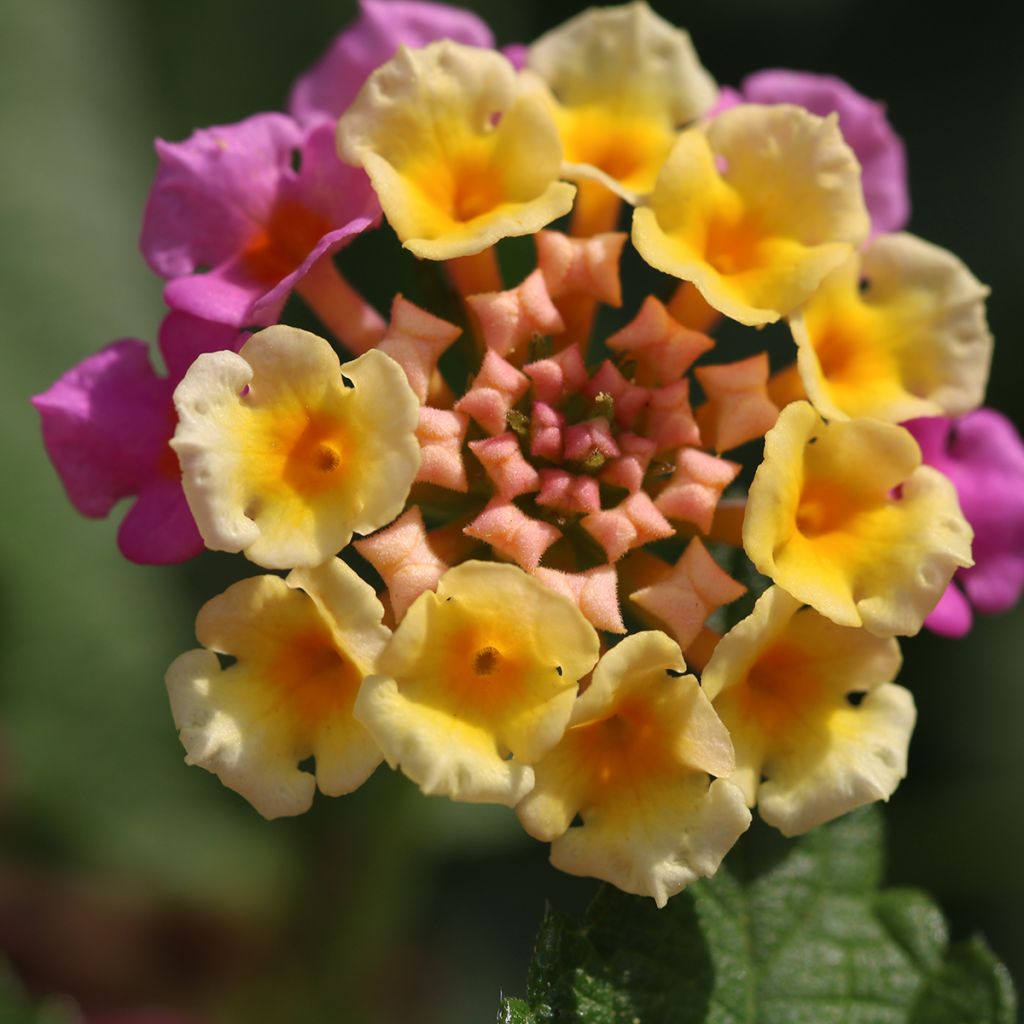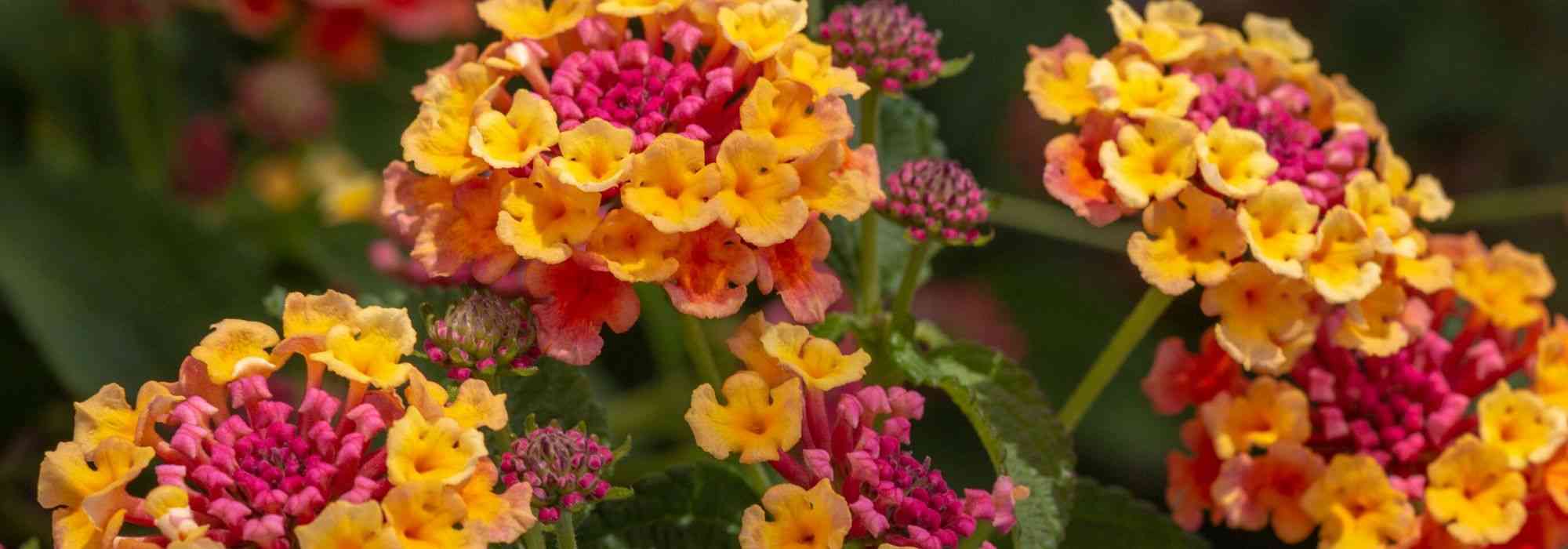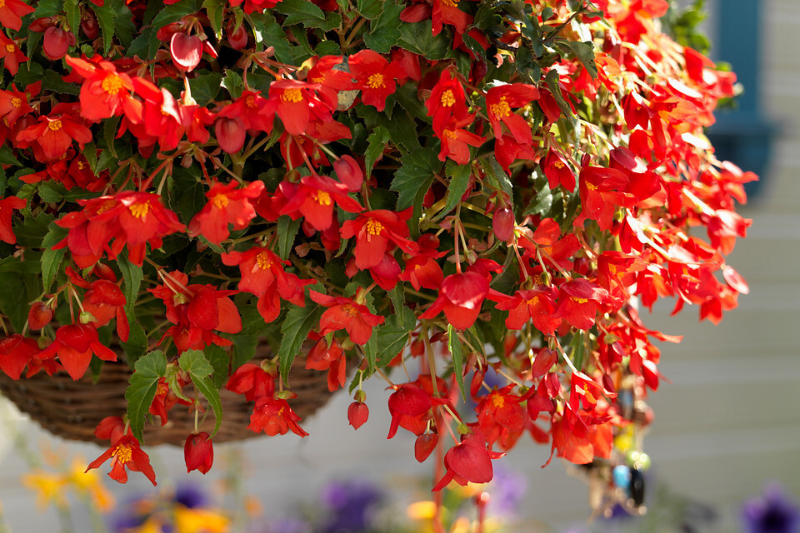

Lantana camara Shamrock Rose - West Indian Lantana
Lantana camara Shamrock Rose - West Indian Lantana
Lantana camara Shamrock™ Rose
Special offer!
Receive a €20 voucher for any order over €90 (excluding delivery costs, credit notes, and plastic-free options)!
1- Add your favorite plants to your cart.
2- Once you have reached €90, confirm your order (you can even choose the delivery date!).
3- As soon as your order is shipped, you will receive an email containing your voucher code, valid for 3 months (90 days).
Your voucher is unique and can only be used once, for any order with a minimum value of €20, excluding delivery costs.
Can be combined with other current offers, non-divisible and non-refundable.
Home or relay delivery (depending on size and destination)
Schedule delivery date,
and select date in basket
This plant carries a 6 months recovery warranty
More information
We guarantee the quality of our plants for a full growing cycle, and will replace at our expense any plant that fails to recover under normal climatic and planting conditions.
Would this plant suit my garden?
Set up your Plantfit profile →
Description
Lantana Shamrock™ 'Rose' is the pinkest among this line of 'Shamrock' hybrids that gather naturally compact plants, forming a very flowery mound in summer. This one produces many small bouquets of pink flowers, punctuated with a few yellow florets in the centre. These qualities make it an excellent plant for border ornamentation, pots, and even hanging baskets. The bush blooms tirelessly until late in the season, on beautiful dark green fragrant foliage, much to the delight of butterflies. A tender plant, Lantana camara is most often grown as an annual outside of regions spared from heavy frosts. In the ground, it withstands summer drought well.
Lantana Shamrock 'Rose' is a small shrub of the Verbenaceae family. The origins of its wild parent, Lantana camara, also known as Lantana or common Lantana, are located in a vast area including Mexico, Central America, the Greater Antilles, the Bahamas, Colombia, and Venezuela. It has naturalized in many subtropical regions where it is considered invasive. It has given rise to numerous cultivars, including sterile hybrids that do not produce seeds. These plants therefore devote all their energy to tirelessly flowering, without the possibility of escaping into nature. Not demanding in terms of soil, water-efficient, extremely floriferous, Lantana has only one flaw: its lack of hardiness, down to about -6°/-7°C for short periods.
Lantana Shamrock™ 'Rose' is a fast-growing shrub, well-branched, reaching approximately 35cm in all directions in one season. Its quadrangular section branches bear a few hooked spines and tough leaves 4 to 6cm long, rough and aromatic when crushed, with finely toothed margins. They are strongly veined, dark green in colour, and theoretically persist in winter if there is no frost. Its abundant flowering extends from July to October. Bouquets of rounded flowers, 4 to 5cm in diameter, bloom in the axils of the leaves. The small tubular-based flowers change color over time, creating an interesting gradient on the scale of the bouquet.
Lantana Shamrock 'Rose' likes sheltered, warm, and very sunny locations, it can survive the winter outside in mild climates. Elsewhere, it is an excellent terrace plant that should be stored in a cold or temperate greenhouse, protected from heavy frosts during winter. While it can put on a show all by itself, this Lantana will also pair well with the blue or white flowers of 'Blue Note' or 'Gletsjer or Glacier' salvias, with lavenders, vervain, and catnip. It is also a very good plant for a low-water garden, when winters are mild.
Note: Attention, our young plug plants are professional products reserved for experienced gardeners: upon receipt, transplant and store them under cover (veranda, greenhouse, frame...) at a temperature above 14°C for a few weeks before being installed outdoors once the risk of frost is definitively eliminated.
Flowering
Foliage
Plant habit
Botanical data
Lantana
camara
Shamrock™ Rose
Verbenaceae
Cultivar or hybrid
Other Lantana
View all →Planting and care
You can plant your Shamrock Lantanas in the ground or in a pot. If you plant them in the ground, wait until the last frost has passed (they tolerate a light frost). In the meantime, you can pre-cultivate them in a pot in a warm and bright place to accelerate their growth. Plant your Lantanas in a sunny location or possibly in partial shade in a very hot and dry climate. They need a light and humus-bearing soil and appreciate a fertilizer input. In the ground, these plants tolerate a periodically dry soil quite well. In pots, they need to be watered regularly. Usually grown as annuals, they are actually fragile perennials: by bringing them indoors at the first frost, you can extend their flowering into autumn and winter. Outdoor cultivation is possible by the seaside, with good winter mulching. Plan for light pruning in March.
Planting period
Intended location
Care
Planting & care advice
This item has not been reviewed yet - be the first to leave a review about it.
Similar products
Haven't found what you were looking for?
Hardiness is the lowest winter temperature a plant can endure without suffering serious damage or even dying. However, hardiness is affected by location (a sheltered area, such as a patio), protection (winter cover) and soil type (hardiness is improved by well-drained soil).

Photo Sharing Terms & Conditions
In order to encourage gardeners to interact and share their experiences, Promesse de fleurs offers various media enabling content to be uploaded onto its Site - in particular via the ‘Photo sharing’ module.
The User agrees to refrain from:
- Posting any content that is illegal, prejudicial, insulting, racist, inciteful to hatred, revisionist, contrary to public decency, that infringes on privacy or on the privacy rights of third parties, in particular the publicity rights of persons and goods, intellectual property rights, or the right to privacy.
- Submitting content on behalf of a third party;
- Impersonate the identity of a third party and/or publish any personal information about a third party;
In general, the User undertakes to refrain from any unethical behaviour.
All Content (in particular text, comments, files, images, photos, videos, creative works, etc.), which may be subject to property or intellectual property rights, image or other private rights, shall remain the property of the User, subject to the limited rights granted by the terms of the licence granted by Promesse de fleurs as stated below. Users are at liberty to publish or not to publish such Content on the Site, notably via the ‘Photo Sharing’ facility, and accept that this Content shall be made public and freely accessible, notably on the Internet.
Users further acknowledge, undertake to have ,and guarantee that they hold all necessary rights and permissions to publish such material on the Site, in particular with regard to the legislation in force pertaining to any privacy, property, intellectual property, image, or contractual rights, or rights of any other nature. By publishing such Content on the Site, Users acknowledge accepting full liability as publishers of the Content within the meaning of the law, and grant Promesse de fleurs, free of charge, an inclusive, worldwide licence for the said Content for the entire duration of its publication, including all reproduction, representation, up/downloading, displaying, performing, transmission, and storage rights.
Users also grant permission for their name to be linked to the Content and accept that this link may not always be made available.
By engaging in posting material, Users consent to their Content becoming automatically accessible on the Internet, in particular on other sites and/or blogs and/or web pages of the Promesse de fleurs site, including in particular social pages and the Promesse de fleurs catalogue.
Users may secure the removal of entrusted content free of charge by issuing a simple request via our contact form.
The flowering period indicated on our website applies to countries and regions located in USDA zone 8 (France, the United Kingdom, Ireland, the Netherlands, etc.)
It will vary according to where you live:
- In zones 9 to 10 (Italy, Spain, Greece, etc.), flowering will occur about 2 to 4 weeks earlier.
- In zones 6 to 7 (Germany, Poland, Slovenia, and lower mountainous regions), flowering will be delayed by 2 to 3 weeks.
- In zone 5 (Central Europe, Scandinavia), blooming will be delayed by 3 to 5 weeks.
In temperate climates, pruning of spring-flowering shrubs (forsythia, spireas, etc.) should be done just after flowering.
Pruning of summer-flowering shrubs (Indian Lilac, Perovskia, etc.) can be done in winter or spring.
In cold regions as well as with frost-sensitive plants, avoid pruning too early when severe frosts may still occur.
The planting period indicated on our website applies to countries and regions located in USDA zone 8 (France, United Kingdom, Ireland, Netherlands).
It will vary according to where you live:
- In Mediterranean zones (Marseille, Madrid, Milan, etc.), autumn and winter are the best planting periods.
- In continental zones (Strasbourg, Munich, Vienna, etc.), delay planting by 2 to 3 weeks in spring and bring it forward by 2 to 4 weeks in autumn.
- In mountainous regions (the Alps, Pyrenees, Carpathians, etc.), it is best to plant in late spring (May-June) or late summer (August-September).
The harvesting period indicated on our website applies to countries and regions in USDA zone 8 (France, England, Ireland, the Netherlands).
In colder areas (Scandinavia, Poland, Austria...) fruit and vegetable harvests are likely to be delayed by 3-4 weeks.
In warmer areas (Italy, Spain, Greece, etc.), harvesting will probably take place earlier, depending on weather conditions.
The sowing periods indicated on our website apply to countries and regions within USDA Zone 8 (France, UK, Ireland, Netherlands).
In colder areas (Scandinavia, Poland, Austria...), delay any outdoor sowing by 3-4 weeks, or sow under glass.
In warmer climes (Italy, Spain, Greece, etc.), bring outdoor sowing forward by a few weeks.



















































